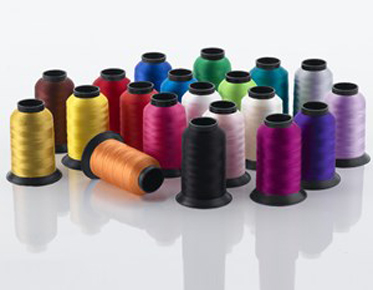The Best Way To Use Embroidery Thread For Quilting
You can use embroidery thread for a
variety of purposes. Quilting projects with embroidery thread is very popular
on digitizing embroidery nowadays.
Not only will these threads make your quilting work stand out, but it will also
make it look more realistic and alive. You can apply a variety of techniques
with embroidery thread to create unique and extraordinary works of art. Besides
that, you can also make 3D art on the quilt with embroidery thread
Once the work is done, you can
accessorize the interior of your home with a beautifully designed quilt.
Embroidery thread is available in a
variety of shades, giving you the opportunity to create distinctive designs and
patterns on your quilt. But do you know certain technical details to implement
it? We are here to help you!
Can embroidery thread be used for
quilting?
You don't have to use expensive
embroidery thread as regular embroidery thread will work flawlessly too.
Another thing about these threads is that you can easily and quickly create 2D
art on your quilt.
Wondering how it's done? This article
will give you all the information you need.
How to use embroidery thread for
quilting work?
Using embroidery thread for quilting
projects is very easy, especially for someone who has already done embroidery thread
before. However, if you are a beginner in this field, you need some help.
The steps provided below will walk you
through how to easily use an embroidery field or thread for your quilting
projects. have a look!
Step 1: The Double Edge Principle
When you want to outline your quilting
job, your hands are needed. This means you won't have a chance to smooth the
edges of the shape, you'll be outlining.
Grabbing the edges of the material
with embroidery yarn or thread can be a little difficult. If you're doing this
on your first quilting project, you probably won't like the results.
But wait, there is a way to easily
eliminate this problem. Before using embroidery thread for outlining, sew the
top of the shape with matching thread.
After that, use the same matching
thread and make a zigzag stitch on the lower part of the shape. Doing this will
give the material a firm and clean edge.
You also don't have to think about it
when you go around the edge during the outline work of the quilt.
Step 2: Use the Best Needle
Before you can start working, you must
choose the correct needle. When you try to use a regular needle for quilting
work, it won't give you the best results.
That's why you have to use a big eyed
needle, but it can be a bit challenging. You are well aware that embroidery
yarn or thread comes in thin and thick forms.
Even if you have the finest yarn, it's
impossible to get it through the eye of an ordinary needle. This is where you
use the big eye needle because you can easily thread embroidery thread through
it.
If you want to accentuate the
silhouette of your quilt, you can use two sets of 6 strands. The thread is
thick, but you can easily thread it through the eye of a needle.
Step 3: Get Enough Rows
It can get very frustrating when you
have to stop and start every time you run out of threads. Therefore, you must
have enough lines to complete a specific area.
To avoid such problems during quilting
work, roughly measure where you want to outline and double it. Ideally, you
should be using around 2 threads. times long.
For example, when you measure about 10
inches, you should choose a 25 inch thread. After that, you have to even out
the threads on the bottom and secure them with knots.
While the knot may seem a bit too big,
it will disappear under the foam or cotton wool and no one will notice it.
Step 4: Choose the Right Hue
If you think about exactly how
embroidery thread or yarn must be used, the biggest issue should be color.
Another problem is shadows.
When you're both set to outlines, you
have to take into account the color of the shape you're tracing. If you are two
different strands of embroidery yarn, try to use two different shades of the
same color.
For example, if you are using a dark
blue wire, pair it with a light blue wire. It would be a good idea to match the
colors present in the material.
Step 5: Sew with Embroidery Yarn or
Thread
It can be tricky for you when you're
trying to pair the needle with two strands of thread through the foam or into
the ball.
In this case, you must use needle nose
pliers. After you push the point of the needle, it will help you pull the whole
thing through the front of your quilting job. You can also use a suitable
thimble.
It's one of the most valuable tools
for saving your fingertips when you're trying to push them through the frontal
area.
Once your needle is all the way
through, you can gently pull on it so the entire thread is in the front area.
Take the work out of sewing with your hands when you own a sewing machine.
Make sure your sewing equipment is
perfectly matched to your embroidery yarn or thread. So when you're ready, use
the zigzag sewing technique through your sewing machine.
It should be enough as a covering for
two strands of embroidery yarn. Keep the length of the stitch midway between
daub stitch and standard stitch.
Best Threads for Quilting
There are many types of threads on the
market. You'll also come across ones that are great for quilting projects.
Listed below are some of the most widely used threads for quilting related
work.
Cotton thread
Cotton threads are capable of
withstanding a lot of heat from an iron. It is very versatile and perfect for
quilting related jobs.
You can also use cotton thread for
lingerie projects, sewing delicate materials, and using medium weight cotton.
You'll also come across cotton threads with silk finishes.
These threads are great for hand
finishing, application and gathering as they will glide perfectly through the
material.
Heavy thread
Most heavy-duty cords you'll come
across are made of polyester. Due to its weight, this thread is not suitable
for sewing work on many garments.
But it's perfect for quilting work,
canvas and upholstery. Heavy-duty thread is their best choice when you have a
ton of home improvement sewing projects.
Metal thread
If you want to add style to your top
seams, metallic thread is what you need. These threads are a must if you are
doing any sewing machine related projects.
They come in a variety of colors such
as copper, gold and silver varieties. Metal wire is a must if you want to
enhance the design of your quilting projects
Polyester thread
Polyester thread is a general purpose
thread for all types of sewing and sewing work.
They also work perfectly with quilting
projects and are sure not to break easily when you're working on stretchy
knits. You can use the thread on sewing equipment or for hand sewing without
any problems.
The thread is very strong and durable but
comes in a variety of shades. Also, polyester threads are said to come with a
silicone or wax finish.
This allows the threads to slide
directly through the material with ease and smoothness. Apart from that, the
thread also provides a bit of shine.
What type of thread should I use for
free motion and hand quilting?
For hand quilting, you can choose a
heavier weight thread. You use 28 weight cotton thread for hand quilting
techniques.
The cord has the ability to withstand
stretch and pull stress very easily.
On the other hand, for free-motion
quilting, the type of thread you choose will help determine how prominent the
stitching will be. So if you choose a heavier thread in a contrasting shade, it
will stand out perfectly.
However, if you use a thread that is
lightweight and has a matching shade, it will blend nicely. Choose monofilament
thread when you want the material to stand out, not the quilting thread.
What type of thread should I use for
machine quilting?
For machine quilting work, choose 40
weight cotton thread. This is because the 40-weight cotton cord is much heavier
than the thinner 50-weight cotton cord.
Using this special thread will make
the quilting stitches easily visible on the quilt. While a 40-pound thread
might be heavier for quilt stitching work, it's still lighter for home sewing
equipment.
The 40 weight thread won't tear easily
and comes in a variety of different colors.



